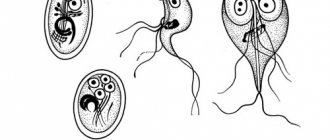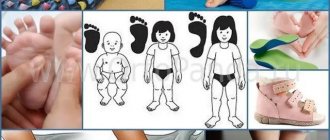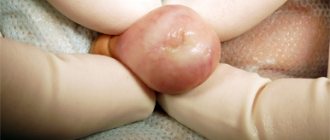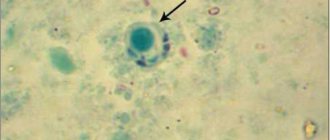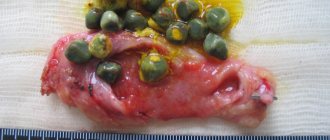- Gallery
- Reviews
- Articles
- Licenses
- Vacancies
- Insurance partners
- Partners
- Controlling organizations
- Schedule for receiving citizens for personal requests
- Online consultation with a doctor
- Documentation
The most dangerous time for helminth infection is summer and autumn. An abundance of fresh vegetables and fruits, constant exposure to the street, relaxation near bodies of water. It would seem that all of the above is very good for health. But only if you follow the rules of personal hygiene.
You can pick up helminths everywhere: in the sandbox, in the garden, on the beach, in kindergarten and in your own hallway, where we bring their eggs on the soles of our shoes. Some children's habit of putting their fingers in their mouth and biting their nails also increases the risk of infection.
Almost all worms are transmitted from person to person through dirty hands. Young children are especially susceptible to such infections. This is facilitated by episodes of weakening of the immune defense of the mucous membranes of the gastrointestinal tract, during the period of viral diseases caused by viruses of the herpetic group (cytomegalovirus, herpes simplex virus types 1 and 2, Epstein-Barr virus), as well as excessive prescription of immunosuppressive drugs.
Infection can occur in utero, as well as through domestic animals, through low-quality food products (meat, fish, milk, vegetables, etc.).
The most common and studied diseases are ascariasis, enterobiasis, toxocariasis, opisthorchiasis and giardiasis.
In recent years, due to the development of international tourism, cases of importation of helminths from southern and Asian countries have become more frequent, many of them remain unstudied.
Description of the disease
Helminthic infestation or helminthiasis (damage to the body by worms) is a widespread phenomenon in childhood. Few children have not suffered from helminthiasis at least once in their life. Manifestations of the disease, as a rule, are known to everyone: the child suffers from itching in the anus (intensified at night), stomach upset, loss of appetite, and a feeling of fatigue.
While in the intestines, the worms feed at the expense of the host’s body, affecting internal organs and systems. Currently, more than 300 varieties of worms are known. The most common in childhood are pinworms and roundworms.
Helminthic infestation requires immediate treatment by a qualified gastroenterologist. While in the child’s body, worms disrupt the process of absorption of nutrients, their waste products have a negative effect on the gastrointestinal tract, and, if left untreated, can affect other vital organs - the lungs, brain, etc.
How can you become infected with pinworms?
Most often, pinworm infection occurs due to non-compliance with hygiene rules in everyday life. Washing your hands too often or carelessly is the first step to infection.
Pinworm eggs can be found literally anywhere. Females live in the human intestine. However, to lay eggs, they crawl into the anus in the evening and at night, which causes severe itching. Scratching, often unknowingly, causes parasite eggs to be transferred to the hands and under the nails, and from there to anything the infected person touches or directly into the mouth.
Itching in the anus
The source of pinworm infection can also be contact with the underwear or towel of a sick person, although it is no less likely that pinworm eggs will also end up on bed linen, a toilet seat, or a bathtub. Food products can also be contaminated with pinworm eggs.
Direct contact with eggs is not the only way to become infected. Infection is possible through airborne droplets. The eggs are very small and light, so they float in the air. Then they settle, for example, on dust that a person inhales. Adult worms live up to 2 months, but self-medication can cause the problem to persist much longer.
Types of worms in children
The most common classification of helminthic infestations is depending on the type of pathogen. The following groups of parasites are distinguished:
- nematodes (roundworms): these include roundworms (actually, worms), pinworms, whipworms;
- cestodes (tapeworms): broad tapeworm, pork tapeworm;
- trematodes (flukes): cat fluke, pulmonary and liver flukes and others.
Depending on the characteristics of the life cycle of worms, there are three main types of helminthiasis:
- contact (damage from pinworms, dwarf tapeworm): parasite eggs are transmitted from child to child through dirty hands, household items, etc.;
- geohelminthiasis (infection with roundworms, hookworms, etc.): worm eggs are found in the ground and enter the body when eating unwashed vegetables and fruits, or not following hygiene rules;
- biohelminthiasis (infection with bovine, pork tapeworm, echinococcus): intermediate forms of development of the parasite are found in the body of carriers (fish, shellfish, dogs, etc.), enter the body by eating contaminated meat or by contact.
Preventive actions
The main and indisputable condition for preventing helminth infection is frequent washing of hands, vegetables, and berries. Preventing worms in pets will also protect humans from infection. High-quality cooking will neutralize worm eggs if they are present in fish and meat. When working in the garden, it is better to use gloves.
Symptoms of worms
There are two forms of helminthiasis with their inherent manifestations: acute and chronic.
In acute helminthiasis, worms enter the body and provoke an immediate immune response in the form of allergic reactions (in connection with this, parents often confuse the presence of parasites with ordinary allergies). Manifestations of chronic helminthiasis can be very diverse. The clinical picture depends on the location of the parasites, their number and the specificity of the body's response to the presence of helminths.
Let us highlight the most characteristic symptoms and indirect signs of the presence of worms in a child:
- general malaise, weakness, fatigue;
- increased body temperature;
- dark circles under the eyes;
- allergic reactions in the form of skin rash (urticaria);
- problems with appetite;
- nausea and vomiting;
- smell from the mouth;
- pain in the abdominal cavity;
- bowel disorders (constipation/diarrhea);
- weight loss;
- itching in the anus;
- excretion of worm fragments in feces.
In addition to these symptoms, children and adolescents may show signs of dysfunction of organs affected by worms. Thus, if the liver is damaged, pain in the right side under the ribs, nausea, and jaundice of the skin may occur. If the lungs are damaged, asphyxia of the respiratory tract, etc. may occur. Children suffering from helminthic infestations are among the most frequently ill. Such children are susceptible to the frequent occurrence of ARVI, stomatitis, gingivitis, vulvovaginitis (girls), etc.
Roundworms or nematodes
The most common group of helminths in young children, which causes various types of nematodes.
A feature of roundworms is the complete absence of the respiratory and circulatory systems. They absorb oxygen throughout their entire body.
The sizes of worms vary from small to medium worms, and the habitat of individuals is various parts of the intestine. Pinworm is the causative agent of enterobiasis, which is often diagnosed in children under one year of age.
Pinworms
These are one of the most common helminths in infants. They can be seen in a child's potty with the naked eye.
- The size of females reaches 12 mm, and males 5 mm. Their body shape is similar to a spindle.
- In females the tip is pointed, in males it is twisted into a ring.
- At the top, the body is slightly expanded and equipped with a vesicle (mouth), with which the pinworm is attached to the intestinal wall. The oral cavity gradually passes into the region of the esophagus, followed by the intestines and genital opening.
Pinworms have a special life cycle, in which females die after laying eggs, and males die after mating. Therefore, you can often see large numbers of these parasites in a baby’s stool. They look like scraps of white threads.
Many parents say they have seen similar black worms in their stool. But parasites do not have such colors. Most often, particles of undigested fiber from food are mistaken for worms.
Causes of worms in children
The main reason for the incidence of helminths is the widespread prevalence of parasite larvae and eggs in the child’s environment and non-compliance with personal hygiene rules. The method of spreading parasitic infection is fecal-oral. Helminth eggs are shed in the feces of infected people and animals.
After using the toilet, worm eggs may remain on the skin of the hands, under the nails or on the underwear. Most often, children become infected in places where large numbers of people gather (in kindergartens, schools, playgrounds). Infection occurs through sharing toys, sports equipment, etc.
In addition, the following reasons for the development of helminthic infestation are identified:
- consumption of poor-quality water and food contaminated with helminth eggs;
- use of other people's personal items (towels, linen);
- poor processing of vegetables and fruits;
- close contacts of the child with domestic and street animals.
The high incidence of helminthiasis infection in early childhood is due to the exploratory instinct of a small child. Until 2 years of age, the main form of cognition of the surrounding reality is oral. The kids are trying to get their teeth into all the subjects. That is why it is important for parents to pay special attention to the cleanliness of objects and things surrounding the child.
Pork tapeworm - what it looks like in the human body (Photo of worms)
The pork tapeworm, like the bovine tapeworm, has 4 suckers on its body, but in addition to this, the body of the helminth is also equipped with a double crown of hooks. Strobila reaches two to three meters in length. The pork tapeworm has a three-lobed ovary; the uterus has from 7 to 12 branches on each side. A characteristic feature of this helminth is the ability of the segments to crawl out of the anus. After exiting, their shell becomes dry and bursts, so helminth eggs enter the external environment. The intermediate host of tapeworm can be pigs and humans. Photo of worms.
The main owner is a person. Intestinal parasites in humans include the pork tapeworm, the helminth is located in the intestines of the patient, where it lays its eggs. Infection occurs through consumption of invasive meat.
Diagnosis of worms
If any symptoms indicate that your child may have worms, it is important to immediately go to the doctor.
Due to the nonspecific symptoms of helminthiasis, parents often turn to various specialists (pulmonologists, allergists, immunologists, etc.), suspecting serious illnesses in the child. However, the cause of the symptoms that arise can often lie in the body being damaged by parasites. That is why children with chronic dermatitis, gastroenterological pathologies and pulmonary diseases, frequent vulvovaginitis in girls, must be examined for the presence of helminths. Since helminths usually predominate in the intestines, in order to identify helminthic infestation, the patient is first referred for a stool examination. The analysis will help identify the presence of parasites in the child’s gastrointestinal tract, as well as determine the type of worm that has penetrated.
In addition, the following methods for diagnosing helminthiasis can be used:
- general blood analysis;
- radiography;
- Ultrasound;
- MRI;
- CT;
- endoscopy with biopsy.
The main task of diagnostic measures is to confirm the presence of helminths in the body, determine their type and exact location. In accordance with the research data obtained, doctors select the most appropriate treatment for a particular case.
Cat (Siberian) fluke
This worm is externally different from its relatives and belongs to trematodes that affect the bile ducts and liver. To become infected with it, it is enough to drink contaminated water or eat fish. The first signs of the disease appear after the worm has matured, 3 months after infection.
Signs of infection with Siberian fluke:
- Increased liver size.
- Pain on the right side of the abdomen.
- Increased body temperature.
- Nausea, vomiting.
- General malaise.
- Allergy accompanied by skin rash.
Parasites can be identified by taking a blood and stool test. The second research method shows laboratory technicians microscopic larvae, surrounded by a golden dense shell and equipped with a plug through which the helminth leaves the home and begins activities destructive to humans.
Consequently, only qualified laboratory technicians are able to detect helminth larvae and recognize them by shape, shade, and then classify them. These actions allow you to select a drug that has maximum effectiveness and speeds up treatment. However, therapy will need to be carried out several times, because modern pharmacological agents act exclusively on hatched parasites.
Treatment of worms
Effective treatment of worms in children is aimed at combating parasites at all phases of development (at the egg, larvae and adult stages), eliminating the consequences of their vital activity, relieving unpleasant symptoms and restoring the child’s body. For this purpose, the patient is first selected to take antihelminthic drugs in the form of tablets, suppositories or suspensions. The products will help block the muscle and nervous system of parasites, followed by their removal from the body naturally (through feces).
In some cases, taking an anthelmintic drug alone is not enough. A comprehensive approach to the recovery process is required. For this purpose, the child is prescribed the following groups of drugs:
- Enterosorbents - for removing harmful toxic waste products of worms from the body.
- Probiotics – to restore intestinal microflora after helminthic infestation.
- Antihistamines - to prevent and eliminate allergic manifestations accompanying helminthiasis.
- Immunomodulators – to maintain the child’s body’s defenses.
- Glucocorticosteroids are indicated in severe forms of the disease to suppress the pathological immune response.
It should be noted that the condition for effective treatment of the disease is the simultaneous administration of therapy to all members of the child’s family (to prevent re-infection).
Complications (helminthic infestation)
It is important for parents to both understand in a timely manner that their child has symptoms of worms and to carefully follow all the doctor’s recommendations. Only in this case can unpleasant and even life-threatening complications be avoided:
- intestinal obstruction;
- jaundice caused by blockage of the bile ducts;
- pancreatitis;
- pustular skin lesions;
- appendicitis;
- acute pulmonary failure;
- eye damage, accompanied by decreased visual acuity and development of strabismus;
- damage to the intestinal wall, peritonitis;
- encephalitis, megingoencephalitis, etc.
Prevention of worms
In order not to think about what to do if a child has worms, you must adhere to the following rules:
- Develop personal hygiene skills in your child as early as possible.
- Keep your child's hands clean.
- Drink only clean water.
- Wash fruits, vegetables and herbs thoroughly before eating them.
- Carry out the necessary heat treatment of meat and fish.
- Conduct timely vaccination and deworming of pets.
If parents suspect that their child has helminths, they should immediately consult a specialist. Doctors at the SM-Doctor clinic for children and adolescents will help quickly diagnose helminthiasis and prescribe appropriate treatment that will destroy the identified pathogens.




